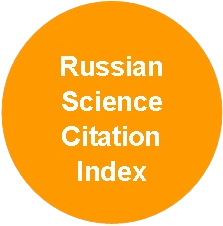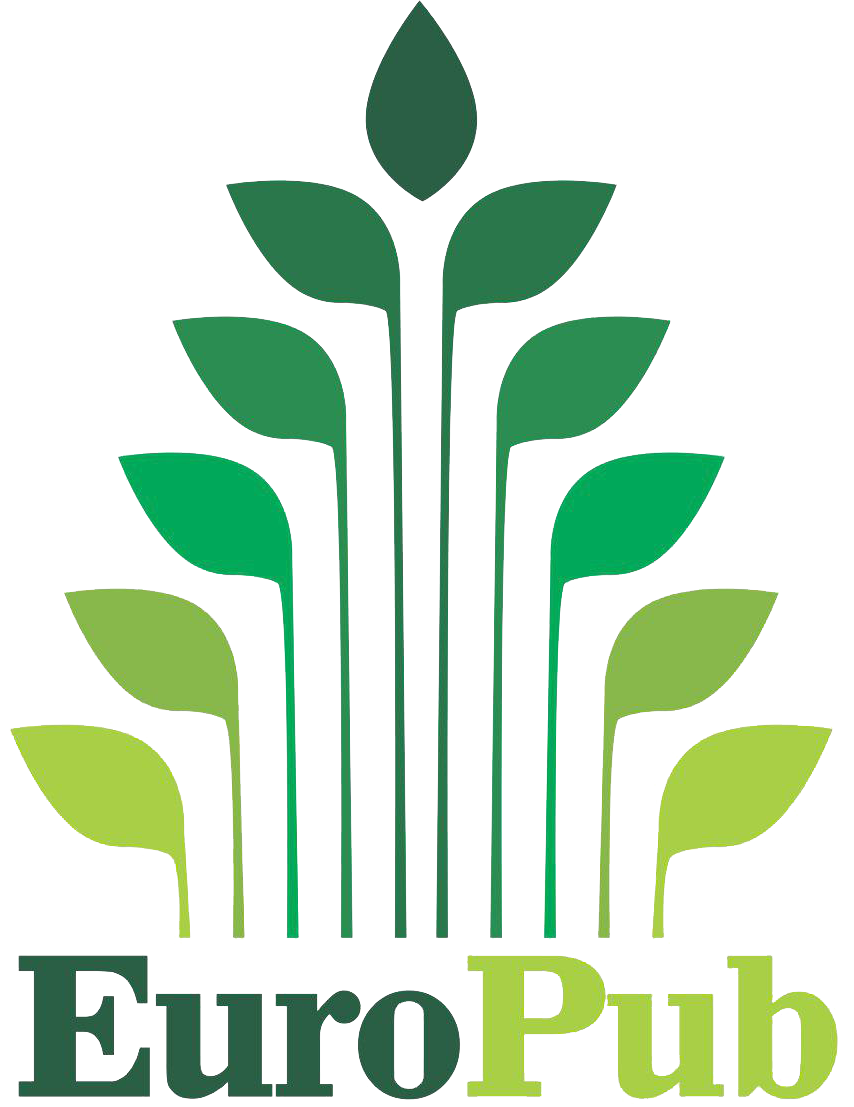Жизнеспособность пыльцы природных популяций Pinus brutia var. pityusa (Steven) Silba Горного Крыма
DOI:
https://doi.org/10.37482/0536-1036-2025-2-24-37Ключевые слова:
Pinus brutia var. pityusa (Steven) Silba, природные популяции, пыльца, жизнеспособность, пыльцевые трубки, аномалии формы, аномалии размераАннотация
Показатели качества пыльцы являются важнейшими характеристиками развития мужских генеративных структур. Для видов рода Pinus L. большое значение имеет количественная оценка результативности развития мужской генеративной сферы, т. к. первые, наиболее важные, этапы формирования семян имеют прямую связь с объемом продуцируемой насаждениями пыльцы и уровнем ее жизнеспособности. Исследование проводили в природных популяциях P. brutia var. pityusa Горного Крыма. Для сбора образцов пыльцы и изучения ее качества были заложены пробные площади по 4 гипсометрическим профилям в западной части южного макросклона главной гряды Крымских гор на мысе Айя, в урочищах Аязьма, Батилиман и в восточной – на г. Караул-Оба и в урочище Новый Свет. На пробных площадях с 10 модельных деревьев собирали пыльцу в период ее свободного вылета. Установлено, что пыльца P. brutia var. pityusa, произрастающей в западной части горного Крыма, имеет более высокое качество в сравнении с пыльцой деревьев восточных территорий. В восточной части также наблюдается увеличение количества аномалий размера и формы пыльцевого зерна, что связано с ухудшением температурного режима в период микроспорогенеза. Изучение свойств пыльцы с использованием метода проращивания на искусственной питательной среде выявило снижение уровня жизнеспособности пыльцы по сравнению с результатами ацетокарминового тестирования, различия составили 4–9 %. При этом наиболее высокий уровень прорастания пыльцы отмечен для насаждений верхней части массива – среднее значение составило 89,9±2,5 %, для центральной и нижней частей оно равнялось 88,1±2,7 и 87,9±3,5 % соответственно. Совместное применение 2 способов оценки жизнеспособности пыльцы позволило предложить новый показатель ее качества – индекс реализации мужского гаметофита на стадии прорастания пыльцы. При помощи данного подхода установлено, что наиболее низкий индекс свойствен насаждениям центральной части лесного массива урочища Аязьма – 0,911.
Скачивания
Библиографические ссылки
Анучин Н.П. Лесная таксация. М.: Лесн. пром-сть, 1982. 512 с. Anuchin N.P. Forest Inventory. Moscow, Lesnays promyshlennost’ Publ., 1982. 512 p. (In Russ.).
Бастаева Г.Т., Лявданская О.А., Малахов С.В., Гордеев Д.С. Аномалии пыльцы сосны обыкновенной (Pinus sylvestris L.) в Платовской лесной даче Оренбургской области // Аграр. наука – 2022: материалы Всерос. конф. молодых исследователей. М.: Рос. гос. аграр. ун-т – МСХА им. К.А. Тимирязева, 2022. С. 253–255. Bastaeva G.T., Lyavdanskaya O.A., Malakhov S.V., Gordeev D.S. Pollen Anomalies of Scots Pine (Pinus sylvestris L.) in the Platovskaya forest dacha, the Orenburg Region. Agrarian Science – 2022: Proceedings of the All-Russian Conference of Young Researchers. Moscow, Russian State Agrarian University – Moscow Timiryazev Agricultural Academy, 2022, pp. 253–255. (In Russ.).
Велисевич С.Н. Качество пыльцы высокогорных популяций Pinus sibirica Du Tour (Pinaceae) в аридных и гумидных районах Алтая // Журн. Сиб. федер. ун-та. Сер.: Биология. 2017. Т. 10, № 3. С. 301–311. Velisevich S.N. Pollen Quality of Pinus sibirica Du Tour (Pinaceae) Mountain Populations in Arid and Humid Regions of Altai. Zhurnal Sibirskogo Federal’nogo universiteta. Seriya: Biologiya = Journal of Siberian Federal University. Series: Biology, 2017, vol. 10, no. 3, pp. 301–311. (In Russ.). https://doi.org/10.17516/1997-1389-0014
Голубинский И.Н. Биология прорастания пыльцы. Киев: Нукова думка, 1974. 368 с. Golubinskij I.N. Biology of Pollen Germination. Kyiv, Nukova dumka Publ., 1974. 368 p. (In Russ.).
Камелин Р.В. Красная книга Российской Федерации (растения и грибы). М.: Т-во науч. изд. КМК, 2008. 885 с. Kamelin R.V. Red Data Book of the Russian Federation (Plants and Fungi). Moscow, KMK Publ. House, 2008. 885 p. (In Russ.).
Коба В.П. Исследование некоторых особенностей морфогенеза и прорастания пыльцы Pinus pallasiana D. Don // Цитология и генетика. 2004. Т. 38, № 3. С. 38–45. Koba V.P. Study of Some Characters of Morphogenesis and Germination of Pinus pallasiana D. Don Pollen. Tsitologiya i genetika = Cytology and Genetics, 2004, vol. 38, no. 3, pp. 38–45. (In Russ.).
Коршиков И.И., Лаптева Е.В., Литвиненко Ю.С. Морфологические изменения пыльцы сосны крымской (Pinus pallasiana D. Don) в интродукционных насаждениях техногенно загрязненных территорий // Пром. ботаника. 2014. Т. 14. С. 61–68. Korshikov I.I., Lapteva Ye.V., Litvinenko Yu.S. Pollen Morphology Changes in Pinus pallasiana D. Don Introduced Stands from Technogenic Polluted Areas. Promyshlennaya Botanika = Industrial Botany, 2014, vol. 14, pp. 61–68. (In Russ.).
Кочкин М.А. Почвы, леса и климат горного Крыма и пути их рационального использования. М.: Колос, 1967. 366 с. Kochkin M.A. Soils, Forests and Climate of Mountainous Crimea and Ways of Their Rational Use. Moscow, Kolos Publ., 1967. 366 p. (In Russ.).
Лакин Г.Ф. Биометрия. М.: Высш. шк., 1990. 350 с. Lakin G.F. Biometrics. Moscow, Vysshaya shkola Publ., 1990. 350 p. (In Russ.).
Лесные экосистемы и атмосферное загрязнение. Л.: Наука, 1990. 200 с. Forest Ecosystems and Atmospheric Pollution. Leningrad, Nauka Publ., 1990. 200 p. (In Russ.).
Махнева С.Г., Менщиков С.Л. Качество пыльцы сосны обыкновенной (Pinus sylvestris L.) в зоне действия выбросов АО «Карабашмедь» // Лесн. вестн. Forestry Bulletin. 2021. Т. 25, № 1. С. 32–44. Makhneva S.G., Menshchikov S.L. Common Pine (Pinus sylvestris L.) Pollen Quality in JSC “Karabashmed” Emission Zone. Lesnoy vestnik = Forestry Bulletin, 2021, vol. 25, no. 1, pp. 32–44. (In Russ.). https://doi.org/10.18698/2542-1468-2021-1-32-44
Некрасова Т.П. Влияние температуры воздуха на формирование пыльцы хвойных древесных пород // Лесоведение. 1976. № 6. С. 975–978. Nekrasova T.P. The Influence of Air Temperature on the Formation of Coniferous Tree Pollen. Lesovedenie = Russian Journal of Forest Science, 1976, no. 6, pp. 975–978. (In Russ.).
Некрасова Т.П. Пыльца и пыльцевой режим хвойных Сибири. Новосибирск: Наука, 1983. 169 с. Nekrasova T.P. Pollen and Pollen Regime of Siberian Conifers. Novosibirsk, Nauka Publ., 1983. 169 p. (In Russ.).
Паушева З.П. Практикум по цитологии растений. М.: Агропромиздат, 1988, 271 с. Pausheva Z.P. Practical Training in Plant Cytology. Moscow, Agropromizdat Publ., 1988. 271 p. (In Russ.).
Плугатарь Ю.В., Коба В.П., Папельбу В.В., Новицкий М.А., Макаров Н.А. Некоторые свойства почв и типологическая структура насаждений Pinus pityusa (Pinaceae) Горного Крыма // Земледелие. 2021. № 7. С. 15–21. Pluhatar Yu.V., Koba V.P., Papelbon V.V., Nowicki M.A., Makarov N.A. Some Soil Properties and Typological Structure of Pinus pityusa (Pinaceae) Plantings in Mountain Crimea. Zemledelie, 2021, no. 7, pp. 15–21. (In Russ.). https://doi.org/10.24412/0044-3913-2021-7-15-21
Подгорный Ю.К., Ругузов И.А. Особенности микроспорогенеза и развития мужского гаметофита сосны крымской в связи с семеношением и жизнеспособностью популяций // Бюл. Никит. ботан. сада. 1979. Т. 38. С. 21–25. Podgorny Yu.K., Ruguzov I.A. Features of Microsporogenesis and Development of Male Gametophyte of Crimean Pine in Connection with Seed Production and Viability of Populations. Bulluten’ gosudarstvennogo Niktskogo Botanicheskogo sada = Bulletin of the State Nikitsky Botanical Gardens, 1979, vol. 38, pp. 21–25. (In Russ.).
Сурсо М.В., Чухчин Д.Г. Рост и развитие пыльцевой трубки можжевельника обыкновенного (Juniperus communis): роль ядра клетки трубки // Изв. вузов. Лесн. журн. 2020. № 2. С. 20–34. Surso M.V., Chukhchin D.G. Growth and Development of Pollen Tubes in Common Juniper (Juniperus communis): the Role of the Tube Cell Nucleus. Lesnoy Zhurnal = Russian Forestry Journal, 2020, no. 2, pp. 20–34. (In Russ.). https://doi.org/10.37482/0536-1036-2020-2-20-34
Третьякова И.Н., Носкова Н.Е. Пыльца сосны обыкновенной в условиях экологического стресса // Экология. 2004. Т. 1. С. 26–33. Tretyakova I.N., Noskova N.E. Scotch Pine Pollen under Conditions of Environmental Stress. Ecologiya = Russian Journal of Ecology, 2004, vol. 35, pp. 20–26. https://doi.org/10.1023/B:RUSE.0000011105.90297.07
Эрдынеева С.А., Ширеторова В.Г., Раднаева Л.Д. Фармакогностическое исследование пыльцы Pinus sylvestris L. и Pinus pumila (Pall) Regel // Вопр. биолог., мед. и фармацевтич. химии. 2021. Т. 24, № 2. С. 29–34. Erdyneeva S.A., Shiretorova V.G., Radnaeva L.D. Pharmacognostic Study of the Pollen of Pinus sylvestris L. and Pinus pumila (Pall) Regel. Voprosy biologicheskoj, meditsinskoj i farmatsevticheskoj khimii = Problems of Biological, Medical and Pharmaceutical Chemistry, 2021, vol. 24, no. 2, pp. 29–34. (In Russ.). https://doi.org/10.29296/25877313-2021-02-05
Коба В.П. Вміст важких металів у пилку сосни кримської у звязку з висотною поясністю зростання // Физиология и биохимия культурных растений. 2004. Т. 36, № 5. С. 410–418. Koba V.P. Heavy Metal Content in Crimean Pine Pollen in Relation to Altitudinal Zonality of Growth. Fiziologiya i biokhimiya kul’turnykh rastenij = Physiology and Biochemistry of Cultivated Plants, 2004, vol. 36, no. 5, pp. 410–418. (In Ukr.).
Christopoulou A., Sazeides C.I., Fyllas N.M. Size-Mediated Effects of Climate on Tree Growth and Mortality in Mediterranean Brutia Pine Forests. Science of The Total Environment, 2022, vol. 812, art. no. 151463. https://doi.org/10.1016/j.scitotenv.2021.151463
Jaconis S.Y., Culley T.M., Meier A.M. Does Particulate Matter along Roadsides Interfere with Plant Reproduction? A Comparison of Effects of Different Road Types on Cichorium intybus Pollen Deposition and Germination. Environmental Pollution, 2017, vol. 222, pp. 261–266. https://doi.org/10.1016/j.envpol.2016.12.047
Kukarskih V.V., Devi N.M., Surkov A.Y., Bubnov M.O., Gorlanova L.A., Ekba Y.A., Hantemirov R.M. Climatic Responses of Pinus brutia along the Black Sea Coast of Crimea and the Caucasus. Dendrochronologia, 2020, vol. 64, pp. 125763. https://doi.org/10.1016/j.dendro.2020.125763
Liu S., Li Z., Wu S., Wan X. The Essential Roles of Sugar Metabolism for Pollen Development and Male Fertility in Plants. The Crop Journal, 2021, vol. 9, iss. 6, pp. 1223–1236. https://doi.org/10.1016/j.cj.2021.08.003
López-Sáez J.A., Camarero J.J., Abel-Schaad D., Luelmo-Lautenschlaeger R., Pérez-Díaz S., Alba-Sánchez F., Carrión J.S. Don’t Lose Sight of the Forest for the Trees! Discerning Iberian Pine Communities by Means of Pollen‐Vegetation Relationships. Review of Palaeobotany and Palynology, 2020, vol. 281, art. no. 104285. https://doi.org/10.1016/j.revpalbo.2020.104285
McCulloch R.D., Mathiasen P., Premoli A.C. Palaeoecological Evidence of Pollen Morphological Changes: a Climate Change Adaptation Strategy? Palaeogeography, Palaeoclimatology, Palaeoecology, 2022, vol. 601, art. no. 111157. https://doi.org/10.1016/j.palaeo.2022.111157
Загрузки
Опубликован
Как цитировать
Выпуск
Раздел
Лицензия
Copyright (c) 2025 В.П. Коба, О.О. Коренькова, Н.А. Макаров (Автор)

Это произведение доступно по лицензии Creative Commons «Attribution» («Атрибуция») 4.0 Всемирная.












